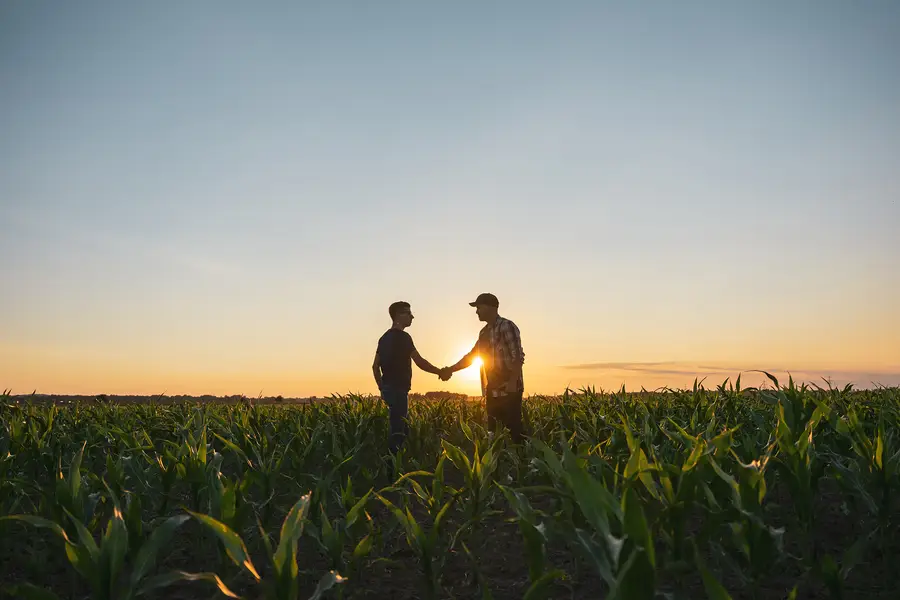Insights
How the Food and Beverage Industry Can Adapt to Climate Change

Navigating Climate Risks in Food & Beverage Supply Chains
Climate change is driving increases in the frequency and intensity of shocks across the food system. For food and beverage manufacturers, these shocks drive up the cost of sourcing key commodities in-line with their quality requirements. In the short term, the cost increases lead to challenging economics for consumers and food and beverage manufacturers alike. Over time, persistent cost challenges can send teams scrambling to reformulate products and supply chains in efforts to protect brand value and the company’s bottom line.
So, what can be done? RTI Innovation Advisors has worked extensively with leading food and beverage manufacturers to answer this question, helping them understand and address their climate-linked supply chain risks. Adaptation is not straightforward, and the best approaches depend on the commodities, geographies, and internal team structures; however, we have found the most effective approach for food and beverage manufacturers. First, manufacturers must understand climate risks and opportunities for key commodities, then (a) collaborate to reduce system-level climate risk, and (b) drive innovation to reduce the company’s climate risk.
Steps food and beverage manufactures can take to reduce their climate risk:
- Understand climate risks and opportunities for key commodities
- Collaborate to reduce system-level climate risk
- Drive internal innovation to reduce your company's climate risk
Understanding climate risks & adaptation opportunities for key commodities
Farmers have always needed to successfully navigate many factors (e.g., risks to their own bottom line, demands from buyers, market fluctuations) in order for food and beverage manufacturers to enjoy a stable supply of key commodities. Increasingly, farmers must navigate new or heightened risks and uncertainties linked to climate change. For food and beverage manufacturers sourcing large quantities of specific commodities, it can be a profitable decision to invest alongside farmers, governments, and other actors seeking to increase the resilience of farmers. In so doing, food and beverage manufacturers can accelerate resilience and help ensure adaptations are aligned with market needs.
To understand where and how to engage, manufacturers need to first understand how risks vary across different products and geographies. For example:
Peanuts and Almonds:
Pests and diseases, including fungal contamination, represent a major threat to crops like peanuts and almonds. Their impacts often drive significant losses for farmers, leading to higher prices for confectioner manufacturers buying these nuts. To serve the confectioner market, farmers must adapt to new pests and diseases while avoiding negative impacts on pollinator health, nut size, and quality – all vital factors for confectioners that can be disrupted by certain adaptation options. Integrated strategies addressing soil health improvement, pest management, and pollinator protection are critical to meet the needs of producers and the market.
Cocoa:
Enhancing agricultural resilience in cocoa supply chains requires targeted, region-specific strategies. Rising temperatures, erratic rainfall, and increased pest and disease pressures, such as cocoa pod borer and black pod disease, threaten crop yields and quality. To build resilience, farmers must adopt climate-smart practices, including the use of drought-resistant cocoa varieties, agroforestry systems to improve soil health and microclimates, and integrated pest management techniques. Additionally, improving farmers’ access to early warning systems and training on sustainable practices can help mitigate the impacts of climate change, ensuring long-term cocoa production sustainability and economic stability for farmers.
Sugar Crops:
For sugar crops, enhancing soil health, reducing sucrose loss, and ensuring the well-being of farmers are key to stabilizing commodity pricing. Increased adoption of best practices in sucrose preservation and green harvesting techniques can significantly reduce sucrose degradation, supporting both crop yield and quality.
Collaborating to Reduce System-Level Climate Change Risk
Food systems are complex. Effectively adapting food systems to climate change will require robust collaboration networks and knowledge sharing among global stakeholders. As the impacts of climate change intensify, it will be increasingly crucial for food and beverage manufacturers to collaborate with farmers, universities, researchers, policymakers, and other industry leaders closely.
For commodities and regions where climate presents a business risk to manufacturers, research and development, procurement, and corporate venture teams can seek opportunities to contribute expertise and resources to drive adaptation. Engaging with leading researchers, policy makers, and yes – even competitors – can surface opportunities to collaborate effectively. food and beverage manufacturers can seek to contribute both expertise and capital to non-competitive efforts to drive adoption of climate-smart practices across the supply shed for priority commodities. Innovations of interest may include:
- Precision agricultural technologies (e.g., AI-driven predictive analytics) that can inform better, data-driven decisions and help to address critical challenges around water efficiency, pest management, and crop management.
- Novel inputs (e.g., drought-resilient crop varieties, microbial seed coats that biologically fix nitrogen in soils).
- Financing to expand access to improved inputs, technologies, or insurance
- Improved access to digital farmer extension and other training services to increase farmers’ understanding of climate-smart agriculture
Working collectively can allow companies to have outsized returns on these investments.
Driving Internal Innovation to Reduce Your Company's Climate Risk
Internal innovation efforts within and between procurement, sustainability, and research and development teams will be key to managing a company’s climate risk.
Sourcing teams are well positioned to address many climate risks. They are already experienced in proactively diversifying sourcing regions and engaging supplier partners to manage sourcing costs. Innovative procurement teams are exploring approaches to limiting company climate risks – including through incentivizing adoption of specific innovations through purchase commitments, grant programs (e.g., targeting cover crop adoption by suppliers), subsidies (e.g., for digital advisory or drought-resilient seeds), and shifting sourcing to regions with lower water risks.
Research and development and sustainability teams have been focused on innovating to meet the demands of consumers in recent years – lowering the emissions footprints of food and beverage products and packaging. Increasingly, it will be important for these teams to collaborate with procurement teams. What is the impact on the company of sourcing a different sized nut, or a new variety of tomato? What’s the most sustainable sweetener to incorporate in new product development? Tradeoffs can be complex to understand, but climate change demands they be considered thoroughly.
Exploring a Collaborative Approach to Sustainability
Whether driving external or internal innovation, a collaborative approach to sustainability and climate change is essential. The challenges we face are too complex and interconnected for any single entity to tackle alone. Climate change is already disrupting crop yields, water availability, and pest dynamics, making it increasingly difficult to maintain consistent production. To ensure the resilience and sustainability of global food systems, diverse stakeholders — from food and beverage manufacturers, farmers, agricultural researchers to policymakers, and technology developers — must work together.
Sign up for The Growth Brief Newsletter to get food innovation insights in your inbox
Disclaimer: This piece was written by Yogesh Abichandani (Innovation Advisor), Lawrence Blume (Food & Agriculture Sector Lead, Senior Innovation Advisor), and Tyler Ovington (Innovation Advisor) to share perspectives on a topic of interest. Expression of opinions within are those of the author or authors.



